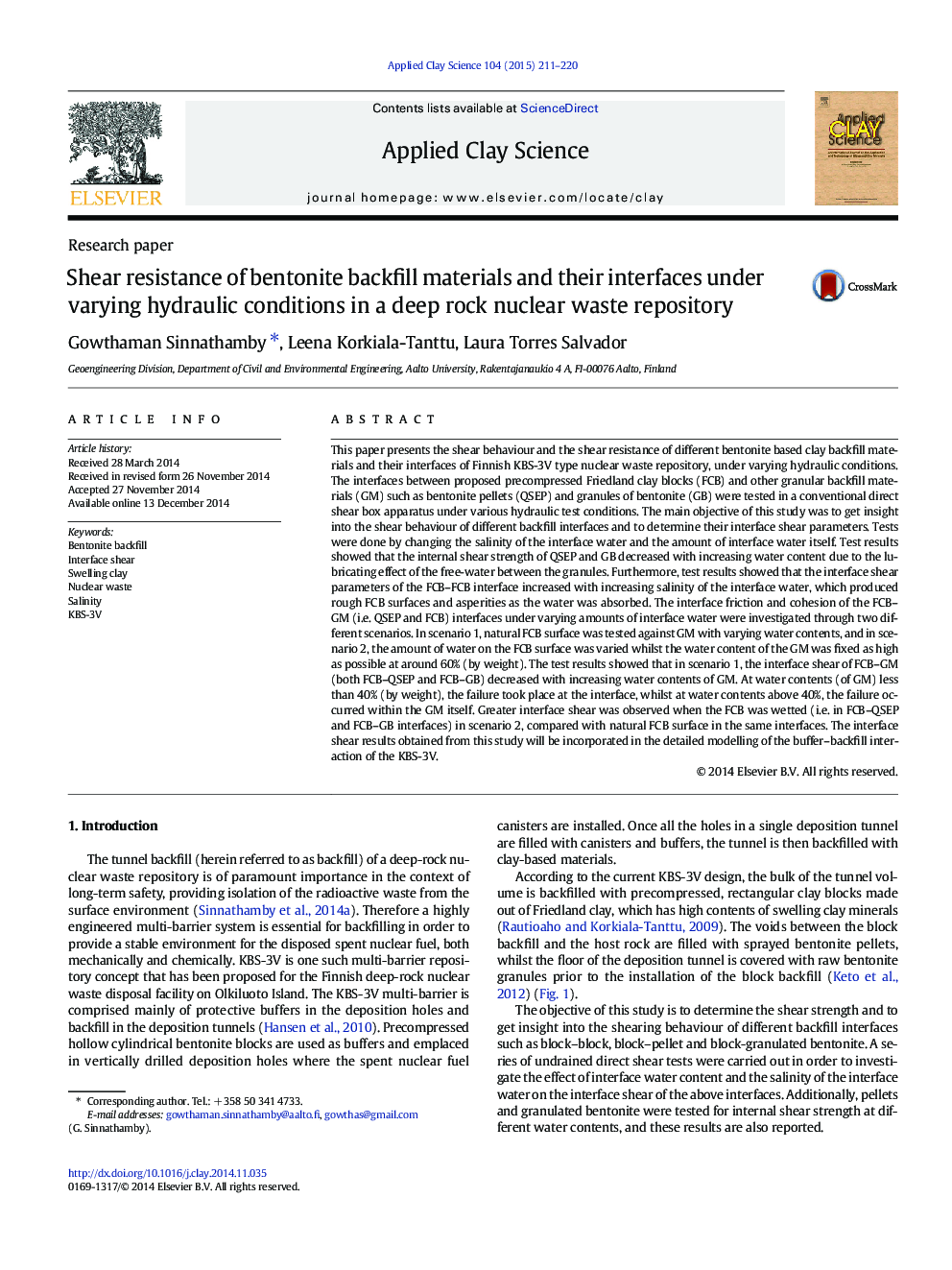| کد مقاله | کد نشریه | سال انتشار | مقاله انگلیسی | نسخه تمام متن |
|---|---|---|---|---|
| 1694631 | 1519074 | 2015 | 10 صفحه PDF | دانلود رایگان |
• Interface shear of bentonite based tunnel backfill in KBS-3V repository was studied.
• Internal shear strength of granular bentonite decreased with increasing water content.
• Interface shear between bentonite blocks increased with increasing water salinity.
• Interface water-dependent tests were carried out in two different scenarios.
• The amount of water present at the interface influenced the interface shear strength.
This paper presents the shear behaviour and the shear resistance of different bentonite based clay backfill materials and their interfaces of Finnish KBS-3V type nuclear waste repository, under varying hydraulic conditions. The interfaces between proposed precompressed Friedland clay blocks (FCB) and other granular backfill materials (GM) such as bentonite pellets (QSEP) and granules of bentonite (GB) were tested in a conventional direct shear box apparatus under various hydraulic test conditions. The main objective of this study was to get insight into the shear behaviour of different backfill interfaces and to determine their interface shear parameters. Tests were done by changing the salinity of the interface water and the amount of interface water itself. Test results showed that the internal shear strength of QSEP and GB decreased with increasing water content due to the lubricating effect of the free-water between the granules. Furthermore, test results showed that the interface shear parameters of the FCB–FCB interface increased with increasing salinity of the interface water, which produced rough FCB surfaces and asperities as the water was absorbed. The interface friction and cohesion of the FCB–GM (i.e. QSEP and FCB) interfaces under varying amounts of interface water were investigated through two different scenarios. In scenario 1, natural FCB surface was tested against GM with varying water contents, and in scenario 2, the amount of water on the FCB surface was varied whilst the water content of the GM was fixed as high as possible at around 60% (by weight). The test results showed that in scenario 1, the interface shear of FCB–GM (both FCB–QSEP and FCB–GB) decreased with increasing water contents of GM. At water contents (of GM) less than 40% (by weight), the failure took place at the interface, whilst at water contents above 40%, the failure occurred within the GM itself. Greater interface shear was observed when the FCB was wetted (i.e. in FCB–QSEP and FCB–GB interfaces) in scenario 2, compared with natural FCB surface in the same interfaces. The interface shear results obtained from this study will be incorporated in the detailed modelling of the buffer–backfill interaction of the KBS-3V.
Journal: Applied Clay Science - Volume 104, February 2015, Pages 211–220
